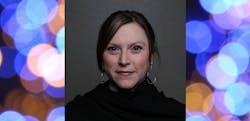We’ve published a lot of energy-focused business and lighting application stories lately. And yet there has been conversation with industry colleagues and leaders across the manufacturing, specification, and design chain indicating that we collectively need to “move on” from the energy efficiency narrative around LED-based solid-state lighting.
The argument from some corners is that the more we focus on the dollars and cents of energy metrics as a driver for LED lighting and controls systems, the longer it takes for true innovation in form, function, and design execution to take place.
I’ll be the first to admit that our editors at LEDs Magazine have made some such remarks ourselves. Indeed, my esteemed former editor Maury Wright had often opined that LEDification 2.0 should and would go beyond the long lifetime and low energy requirements of LEDs to more sophisticated capabilities. However, I’d like to curb any question about whether I personally think that meant the energy efficiency story is “over.” Economic pressures on businesses — and industries — will always exist. And a greater public awareness of grid instability means the load of existing buildings and public lighting needs to be addressed.
I don’t think you can have a conversation about innovation in lighting, controls, and integration into the built environment without considering the influence of energy, climate, decarbonization, and the long-trail impacts of materials, components, and supply chain logistics on the finished products, the design practices, and the end results in action. Again, the current perception is that it costs a lot more to prioritize those changes in sourcing and manufacturing operations, but there are companies who are showing they can do it and that customers want them to.
How can we speak about preserving dark skies for communities and the natural world without appreciating what an outdoor area luminaire does not do (emit stray light and glare, maintaining full light levels at all times — which wastes photons and thus circles back to energy consumption?
How can we admire new office concepts designed to engage employees in gathering without noticing that the lighting layout itself enables the flexibility to move furnishings, repurpose the space, and add more seating whenever the need arises? This can be done without rewiring the space or adding more luminaires for different seating layouts (read: more power, more labor, more expense), while also leveraging skylights and windows in certain areas.
How can we learn about a firm designing its horticultural luminaires to meet the needs of the growers — rather than convincing them they must have additional features that waste photons which should be delivered to plants for best yields and return on investment — without understanding the impact of reducing opex and capex for controlled environment agriculture operators?
It's always going to circle back to a conversation about cost and sustainability intersecting with functionality. The design community is really being tasked with making all three of those factors a priority while achieving new levels of aesthetic impact, addressing social justice and equity concerns, and respecting the unique goals of each project. If that's not an incubator for innovation, I don't know what is.
CARRIE MEADOWS is managing editor of LEDs Magazine, with 20-plus years’ experience in business-to-business publishing across technology markets including solid-state technology manufacturing, fiberoptic communications, machine vision, lasers and photonics, and LEDs and lighting.
For up-to-the-minute LED and SSL updates, follow us on Twitter. You’ll find curated content and commentary, as well as information on industry events, webcasts, and surveys on our LinkedIn page and our Facebook page.

Carrie Meadows | Editor-in-Chief, LEDs Magazine
Carrie Meadows has more than 20 years of experience in the publishing and media industry. She worked with the PennWell Technology Group for more than 17 years, having been part of the editorial staff at Solid State Technology, Microlithography World, Lightwave, Portable Design, CleanRooms, Laser Focus World, and Vision Systems Design before the group was acquired by current parent company Endeavor Business Media.
Meadows has received finalist recognition for LEDs Magazine in the FOLIO Eddie Awards, and has volunteered as a judge on several B2B editorial awards committees. She received a BA in English literature from Saint Anselm College, and earned thesis honors in the college's Geisel Library. Without the patience to sit down and write a book of her own, she has gladly undertaken the role of editor for the writings of friends and family.
Meadows enjoys living in the beautiful but sometimes unpredictable four seasons of the New England region, volunteering with an animal shelter, reading (of course), and walking with friends and extended "dog family" in her spare time.





